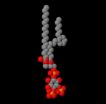(Press-News.org) Munich, Germany – A novel blood test that predicts sudden death risk in heart failure patients is set to help physicians decide which patients would benefit from implantable cardioverter defibrillators (ICDs). The findings were presented at the ESC Congress 2012 today, August 26, by Professor Samuel Dudley from Chicago, IL, US.
Approximately 5 million patients in the US have heart failure, a condition where the heart is unable to pump blood adequately, and nearly 550,000 people are diagnosed annually. Heart failure is the single most common cause of admission to hospitals in the US.
ICDs, which are devices similar to pacemakers, can monitor and treat abnormal heartbeats and are surgically implanted in patients with severe heart failure to prevent sudden death. "The problem is that more than half of the patients who get them don't need them, and nearly half of the patients who would benefit don't get one," said Professor Dudley, who is professor of medicine and physiology at the University of Illinois at Chicago College of Medicine and principle investigator of the study.
The clinical trial presented at the ESC Congress 2012 showed that a blood test can predict which patients will need a defibrillator in the next year. The test, called PulsePredic, discriminates with high predictive power who will or will not need an ICD to prevent abnormal heartbeats and subsequent sudden death.
The simple laboratory test identifies changes in the gene message (mRNA) for the SCN5A gene, which is known to be involved in sudden death. The increase in the changed gene message was able to predict who would have a sudden death episode requiring defibrillation. "The test predicts whether you will have sudden death from heart failure and whether you will need a defibrillator in the next year," said Professor Dudley.
The SCN5A gene encodes for proteins, called voltage-gated sodium channels, responsible for generating the main current for electrical activity in the heart. Alterations in the sodium current, either up or down, lead to arrhythmias.
Professor Dudley and his team evaluated the new blood test in 180 adult patients, including 135 patients with heart failure and 45 patients without heart failure as controls. Patients with congenital heart disease, infections, and inflammatory conditions were excluded.
The SCN5A gene was measured in heart muscle cells and white blood cells. The changes in the gene message were able to predict who would have a sudden death episode requiring defibrillation. Heart failure patients who had abnormal heartbeats that would normally cause sudden death had significantly higher levels of these gene variants compared to patients who did not have abnormal heartbeats. The amount of variants in the blood had excellent predictive power to determine arrhythmic risk, suggesting that a blood test for sudden death risk and the need for an ICD is possible.
Figure 1 shows the distributions of the C type SCN5A variant (VC) in controls, patients with heart failure (HF) and no sudden death (i.e. no ICD shocks), and patients with HF and a sudden death episode (i.e. with ICD shocks). The separation of the distributions of patients with and without a sudden death episode allows for a discriminatory test.
Figure 2 is a receiver operating characteristic (ROC) curve which shows that the discriminatory power of the C or D type variants of SCN5A as measured by the area under the curve are equivalent and much higher than an ejection fraction of less than or equal to 20%.
"This is the first test of its kind," said Professor Dudley. "It is amazing stuff, with promise to change dramatically the way we direct treatments to patients at risk for sudden death."
The next steps in the development of the test will be to carry out a larger trial and work with regulatory agencies to receive approval for clinical use.
###
Contributors:
Samuel Dudley, Ge Gao, Vikram Brahmanandam, Mihai Raicu, Srinivasan Kasturirangan, Lianzhi Gu, Alan Schwartz and Smita Negi.
Notes to editors
Please note that picture and CV from the author, abstract, picture and CV from spokesperson can be found here.
This work was supported by National Institutes of Health grants: R01 HL106592, R01 HL104025, T32 HL072742, and P01 HL058000, and a Veterans Administration MERIT award.
About the European Society of Cardiology www.escardio.org
The European Society of Cardiology (ESC) represents more than 75,000 cardiology professionals across Europe and the Mediterranean. Its mission is to reduce the burden of cardiovascular disease in Europe.
About ESC Congress 2012
The ESC Congress is currently the world's premier conference on the science, management and prevention of cardiovascular disease. ESC Congress 2012 takes place 25-29 August at the Messe München in Munich. The scientific programme is available at: http://spo.escardio.org/Welcome.aspx?eevtid=54
More information is available from the ESC Press Office at press@escardio.org. END
Novel blood test predicts sudden death risk patients who would benefit from ICDs
2012-08-27
ELSE PRESS RELEASES FROM THIS DATE:
ECG is a cost effective method for diagnosing cardiac abnormalities in young athletes
2012-08-27
Munich, Germany – Cardiovascular screening with ECG in young athletes is a cost effective way of diagnosing cardiac abnormalities, at just 138 Swiss Francs (about €115) per athlete. The findings were presented today, August 26, at the ESC Congress 2012 by Dr Andrea Menafoglio from Switzerland.
Sport is beneficial for health in most people. But for the small minority of the population who has cardiovascular abnormalities, sport can cause harm and very rarely – in one to three per 100,000 athletes per year – it can lead to sudden cardiac death.
"The cardiac arrest of ...
Electrical storm is a potent risk factor for mortality and morbidity
2012-08-27
Munich, Germany – Electrical storm (ES) is a potent risk factor for mortality and morbidity, according to research presented today, August 26, at the ESC Congress 2012 by Dr Federico Guerra from Italy. Data was also presented on which patients are prone to developing ES and how effective current treatments are.
Sustained ventricular arrhythmias, such as ventricular tachycardia (VT) or ventricular fibrillation (VF), are often seen as serious and devastating events, given their ability to lead to cardiac arrest and death if not treated promptly. Dr Guerra said: "The cluster ...
How ocean currents affect global climate is a question oceanographer may be close to answering
2012-08-27
TALLAHASSEE, Fla. - Kevin Speer has a "new paradigm" for describing how the world's oceans circulate — and with it he may help reshape science's understanding of the processes by which wind, water, sunlight and other factors interact and influence the planet's climate.
A Florida State University professor of oceanography with a passion for teaching, Speer and a colleague recently published a significant paper in the respected journal Nature Geoscience.
Working with John Marshall, an oceanography professor at the Massachusetts Institute of Technology, Speer reviewed ...
Compounds activate key cancer enzyme to interfere with tumor formation
2012-08-27
Scientists have known for decades that cancer cells use more glucose than healthy cells, feeding the growth of some types of tumors. Now, a team that includes researchers from the National Institutes of Health's new National Center for Advancing Translational Sciences (NCATS) has identified compounds that delay the formation of tumors in mice, by targeting a key enzyme that governs how cancer cells use glucose and its metabolites.
The study, published August 26 in the advance online publication of Nature Chemical Biology, was led by researchers from the Koch Institute ...
JCI early table of contents for Aug. 27, 2012
2012-08-27
New model of muscular dystrophy provides insight into disease development
Muscular dystrophy is a complicated set of genetic diseases in which genetic mutations affect the various proteins that contribute to a complex that is required for a structural bridge between muscle cells and the extracellular matrix (ECM) that provides the physical and chemical environment required for their development and function. The affects of these genetic mutations in patients vary widely, even when the same gene is affected. In order to develop treatments for this disease, it is important ...
New model of muscular dystrophy provides insight into disease development
2012-08-27
Muscular dystrophy is a complicated set of genetic diseases in which genetic mutations affect the various proteins that contribute to a complex that is required for a structural bridge between muscle cells and the extracellular matrix (ECM) that provides the physical and chemical environment required for their development and function. The affects of these genetic mutations in patients vary widely, even when the same gene is affected. In order to develop treatments for this disease, it is important to have an animal model that accurately reflects the course of the disease ...
The role of genes in political behavior
2012-08-27
Politics and genetics have traditionally been considered non-overlapping fields, but over the past decade it has become clear that genes can influence political behavior, according to a review published online August 27th in Trends in Genetics. This paradigm shift has led to novel insights into why people vary in their political preferences and could have important implications for public policy.
"We're seeing an awakening in the social sciences, and the wall that divided politics and genetics is really starting to fall apart," says review author Peter Hatemi of the ...
Review of new evidence to treat colonic diverticulitis may help doctors
2012-08-27
Recent evidence and new treatments for colonic diverticulitis that may help clinicians manage and treat the disease are summarized in a review in CMAJ (Canadian Medical Association Journal).
Diverticular disease, in which sac-like protrusions form in the wall of the colon, is common in developed countries, although it is increasing throughout the world, likely because of lifestyle changes. In people with the disease, about 25% will develop symptoms, which include abdominal pain and changed bowel habits, often leading to a diagnosis of irritable bowel syndrome. The widespread ...
Vitamin B3 may offer new tool in fight against 'superbugs'
2012-08-27
CORVALLIS, Ore. – A new study suggests that nicotinamide, more commonly known as vitamin B3, may be able to combat some of the antibiotic-resistance staph infections that are increasingly common around the world, have killed thousands and can pose a significant threat to public health.
The research found that high doses of this vitamin increased by 1,000 times the ability of immune cells to kill staph bacteria. The work was done both in laboratory animals and with human blood.
The findings were published today in the Journal of Clinical Investigation by researchers ...
Fitting Kv potassium channels in the PIP2 puzzle
2012-08-27
A recent study in the Journal of General Physiology brings new insights to an area of ion channel regulation: whether voltage-gated potassium (Kv) channels can be regulated by physiological changes to PIP2.
Potassium channels, microscopic pores that allow potassium ions to cross cell membranes, are crucial to such diverse processes as conduction of the nerve impulse, regulation of the heartbeat, and the secretion of hormones such as insulin. PIP2, a minor phospholipid component of cell membranes, regulates the activity of various proteins in the cell membrane, and ...

